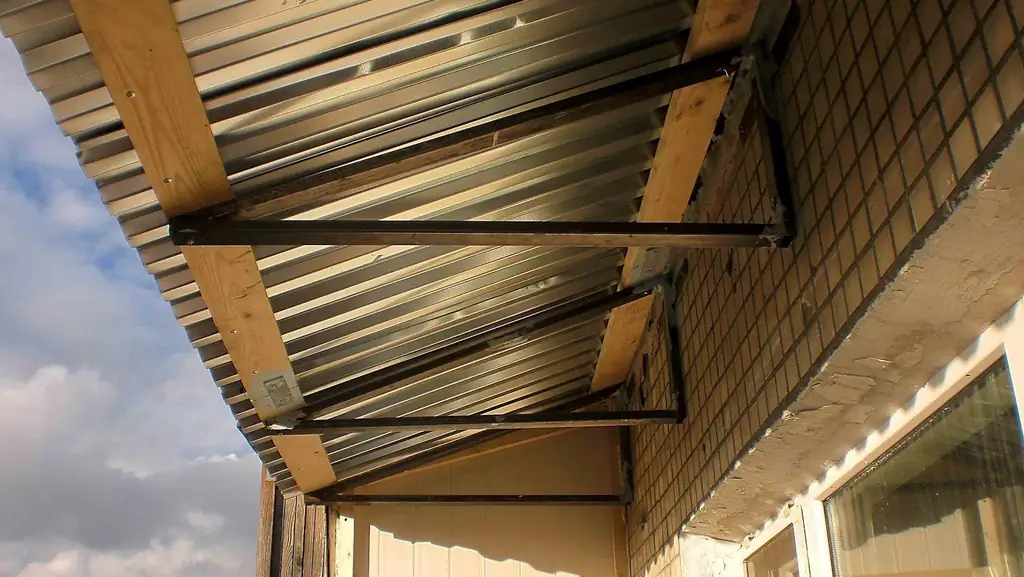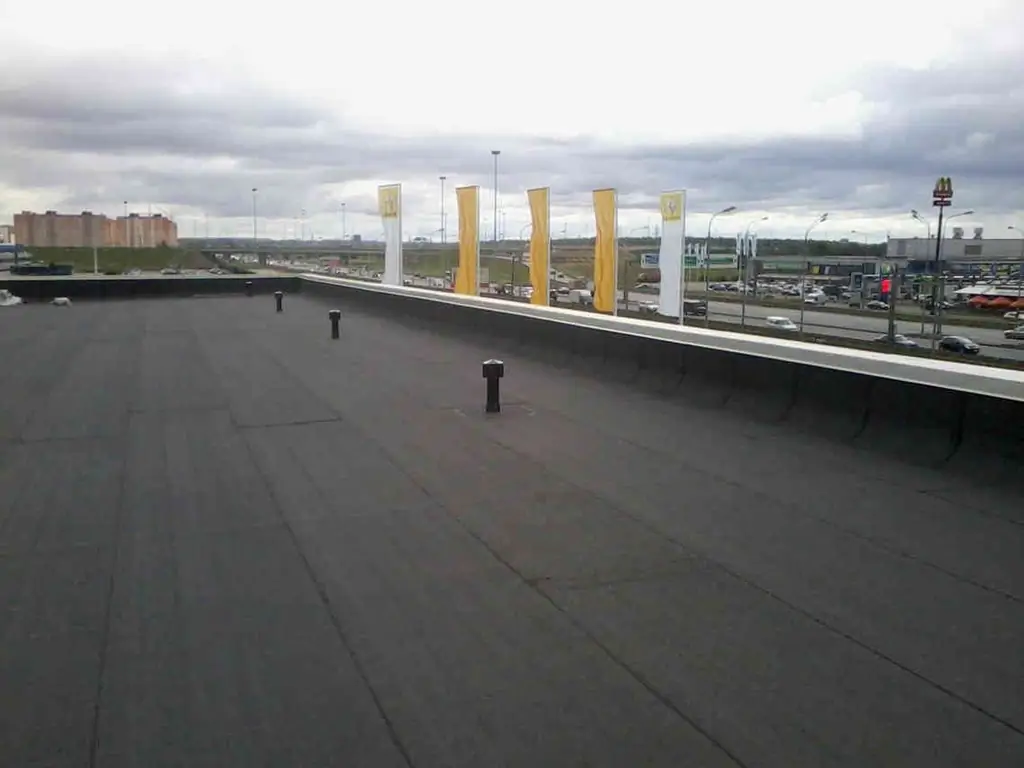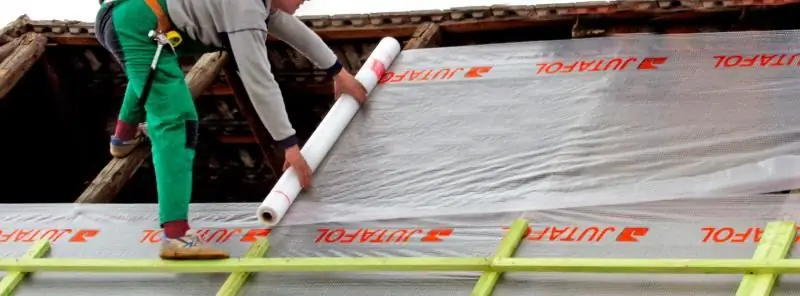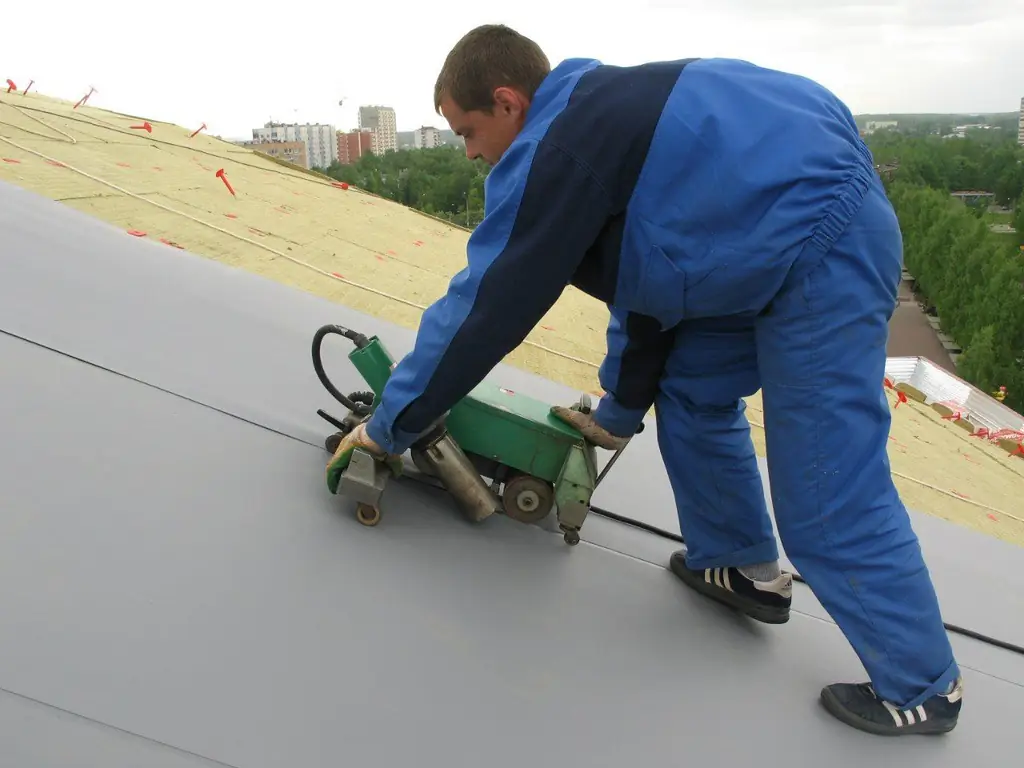
Table of contents:
- Author Bailey Albertson [email protected].
- Public 2023-12-17 12:53.
- Last modified 2025-01-23 12:41.
PVC membrane roof covering

In residential and administrative buildings, a special role is given to the quality and composition of the protective layers of the roofing. This is due to the fact that the roof absorbs the bulk of precipitation, temperature changes and ultraviolet radiation. The use of modern technologies has contributed to the invention of high-quality insulation, as well as waterproofing and vapor barrier materials. Such coatings have a high degree of efficiency, but their cost and complexity of installation forces manufacturers to create more convenient options that meet all the requirements of protective layers for the roof. PVC membranes are a prime example of this.
Content
-
1 PVC roofing membrane
1.1 Characteristics of PVC membrane
-
2 Roofing device made of PVC membrane
-
2.1 Installation of a PVC membrane roof
2.1.1 Video: installation of PVC membrane on a flat roof
-
-
3 Features of the operation of the PVC membrane roof
-
3.1 Repair of PVC membrane roofing
3.1.1 Video: welding the roofing membrane
-
PVC roofing membrane
This type of roofing has been known in the construction industry since the mid-nineties of the last century. Currently, the popularity of PVC roofing is growing rapidly. This is due to the fact that the material is highly resistant to the harmful effects of ultraviolet radiation and temperature extremes throughout the entire service life. The specified features of the coating are due to its chemical composition.
PVC roofing membranes have proven themselves well for large roof areas. Therefore, they are often used to cover large office and shopping centers, industrial buildings and other structures with a large flat roof. Such membranes can be used for roofs with a slope of no more than 15 degrees.

PVC membranes are used on roofs with a large area and an angle of inclination not exceeding 15 degrees
PVC membranes are produced in the form of a film with a thickness of 0.8 to 2.0 mm, rolled into rolls with a width of 90 to 200 cm.
Characteristics of PVC membrane
Combining modern technological developments in the field of chemistry, PVC roofing membrane has established itself as the most profitable and effective protective coating. Many years of experience in using this material made it possible to highlight its most striking characteristic features:
-
Welding of seams of the material is carried out using modern technologies. This process takes place using hot air, which melts only the upper layers of the material, which ensures a uniform connection of the surfaces. Welding in this way makes the seams waterproof.

Welding machine for PVC membranes Only with the help of special equipment can you make a high-quality waterproof seam
- PVC membranes are resilient and resistant to mechanical damage. The material acquired these qualities thanks to the elastic-forming elements that make up its composition.
- The material has increased chemical resistance to a large amount of acids, alkalis and salts, as well as to ultraviolet radiation.
-
The homogeneous structure of the polymeric components of the membrane provides a high level of elasticity and tightness. Thanks to this, PVC membranes create a flexible waterproofing layer.

PVC membrane on the roof with bends PVC membrane is flexible and elastic, so it can be used on complex roofs
- When exposed to open fire, the material does not ignite. When melted, PVC membranes do not emit harmful substances, which indicates the environmental friendliness of the coating.
- Low and high temperatures do not change the performance properties of the material.
-
Having excellent waterproofing properties, the material has good vapor permeability. This feature prevents the accumulation of condensation, which turns into ice in the colder months.

Vapor permeability of PVC membrane The PVC membrane is waterproof, but freely removes steam from the under-roof space
- Installation and transportation of PVC membrane is not difficult. The weight of the covering with an area of 1m² will not exceed 1.5 kg.
-
Manufacturers are not limited to the colors of PVC membranes. However, using shades of dark colors will attract more sunlight.

Colors of PVC membrane PVC membranes are produced in a wide range of colors
- The material has a long service life, which reaches 60 years.
PVC membrane roofing device
PVC membranes for roofing are made from polyvinyl chloride compounds with the addition of polymer plasticizers. Such additives contribute to the elasticity of the coating and resistance to various temperature conditions. To give the material additional strength and resistance to mechanical damage, it is reinforced with ether fiber.
PVC roofing membranes consist of three main elements:
- An elastic layer made of polyvinyl chloride with a homogeneous structure.
- Reinforcing layer made of textiles.
-
A similar PVC layer.

Polyvinyl chloride membrane layers Reinforcement strengthens the membrane, and the top layer provides its elasticity
Installation of PVC membrane roofing
Construction work on laying polyvinyl chloride membranes is not difficult, but non-compliance with the installation technologies for this coating will affect the integrity of the material and its service life. In this regard, it is better to entrust the installation of a PVC membrane to experienced specialists.
For installation work on laying PVC membranes, it will take half the time than for the same processes with bitumen-polymer materials. Experienced pavers will cover up to 1000 m² with this material in one working shift.

It is better to entrust the installation work to qualified builders who will cover the roof much faster and ensure the maximum membrane service life.
Installation of a PVC membrane is carried out in several main ways:
-
using a special welding machine. Welding PVC material is the best among the listed methods, since melting using a heated air stream guarantees the strength and waterproofness of the joint. Special equipment for this process - a welding machine - delivers a jet of hot air with a temperature of 400 to 600 ° C. The joint width can be adjusted from 20 to 100 mm. PVC membrane welding equipment is able to maintain stable pressure and air flow rate throughout the entire laying process;

PVC welding connection Welding of a membrane made of polyvinyl chloride is carried out with a special apparatus that delivers a stream of air to the junction with a temperature of 400 to 600 degrees
-
special tapes coated with adhesive on both sides. This method cannot be called reliable, since it is easy to disconnect the material with little effort. In this regard, gluing with tapes can only be recommended as a temporary connection;

Double Sided Roofing Tape The tape for gluing the membrane cannot ensure the reliability of the connection of the membrane sheets, therefore it is used only for temporary fastening
-
fixing the canvas with ballast. The PVC sheet is laid out on the roof surface, fixing only along the perimeter and in elevated places. To prevent wind currents from displacing the membrane, it is pressed down with a load, which is used as concrete blocks, bricks, stones and other heavy objects. The weight of such ballast should be about 50 kg per 1 m² of coverage. When using this method of installing PVC membrane, it is necessary to ensure that the supporting beams or floor slabs can withstand the ballast pressure. It should also be noted that bricks, stones and concrete blocks can damage the membrane. Therefore, a non-woven fabric must be laid on top under the ballast;

Roof ballast As ballast for the roof, you can use gravel, large sea pebbles, stones and other heavy objects that create a load of at least 50 kg per square meter of surface
-
with anchors (mechanical method). Special anchors with plastic dowels in the form of umbrellas are used. They are screwed with a screwdriver into the places where the canvases overlap. The distance between the anchors should be no more than 20 cm.

Mechanical method of fastening PVC membrane It is convenient to drive plastic dowels using a special pneumatic or gas tool
Video: installation of PVC membrane on a flat roof
Features of the operation of the PVC membrane roof
Polyvinyl chloride roofing membranes are tough and durable materials. However, the operation of this coating has a number of nuances:
- If cleaning of the membrane surface is required, then soft-bristled instruments must be used. All kinds of scrapers and rakes can damage the membrane sheet.
- When cleaning the surface of PVC roofing from snow, it is necessary to use wood equipment.
- It is not recommended to completely remove snow from the roof. It is better to leave a layer of snow about 10 cm thick, it will serve as an additional protection for the PVC membrane.
- Animals must not be allowed to enter the roof with such a coating, as well as the ingress of vegetable oils, alkaline liquids, substances with a concentration of more than 10% and products based on oil refining.
- Cleaning, repairs and other construction activities should be carried out only with the involvement of qualified workers.
- Exposure to temperatures above 82 ° C will damage the PVC membrane.
PVC membrane roofing repair
Repair work on PVC surfaces consists in the careful removal of damaged areas and a high-quality application of a new coating. These actions must be carried out by qualified personnel using special equipment. The main task of such a repair is to achieve an absolutely waterproof surface. In case of replacement of a part of the coating, it is necessary to remove all the damaged canvas. In this case, a new coating of a larger area will guarantee complete waterproofing of the surface.

Repairing a PVC roofed roof requires certain qualifications and special equipment
Video: welding a roofing membrane
When using a PVC roofing membrane, installation by qualified installers and the use of special equipment will be the key to its durability and waterproofing.
Recommended:
How To Make A Roof On A Balcony, Including The Features Of Its Device, As Well As How To Repair A Roof

How the roof of the balcony is arranged and what materials are needed for its manufacture. The procedure for installing the roof of the balcony and the technology for eliminating breakdowns
The Welded Roof, Including The Features Of Its Construction, Operation And Repair, As Well As How To Avoid Mistakes During Installation

The main features and characteristics of the overlaid roof. Materials and tools required for the job. Installation, operation and repair of the overlaid roof
Roof Membrane, Its Types And Brands With Description, Characteristics And Reviews, As Well As Installation Features

What is a roofing membrane. What types of membranes are used in the construction of various roofs. Membrane brands and features of their installation
Membrane Roof, Including The Features Of Its Design, Operation And Repair, As Well As How To Avoid Mistakes During Installation

Technical characteristics, advantages and disadvantages of membrane roofing. Features of installation. Rules for the operation, maintenance and repair of a membrane roof
Polycarbonate For The Roof And Its Types With A Description, Characteristics And Features Of Installation And Operation

Polycarbonate and its types. How to choose polycarbonate for your roof. Features of storage and installation, service life. Consumer reviews
